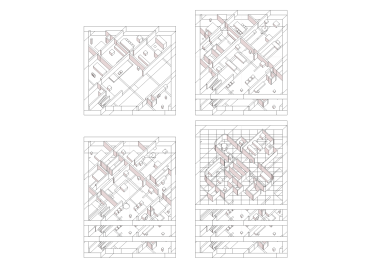Program Installations
Download Zip. File: Program Installations
Log into your computer as Administrator.
- Open folder: 1A_Grasshopper_Installer
- Start Rhino 5.0 (64-bit)
- Double-click grasshopper_0.9.76.0.rhp file to run the installation.
- Restart Rhino.
- Grasshopper should now be installed and you should be able to run the Grasshopper command.
- Drag and drop ShatterInt file into the Grasshopper window.
- Open folder: 1B_Radiance_Daysim_EnergyPlus_Installer and run all 3 installations. For radiance installation, edit the File Path to be: C:\Radiance
- Open folder: 1C_Ladybug_Installer. Drag and drop all userObject files onto the grasshopper canvas.
- Open folder: 1D_TTToolbox_1.6. Move the folder ‘TT Toolbox’ to your local grasshopper components folder, that can be located by typing “GrasshopperFolders” in Rhino command line and then Select “Component”
- Restart Rhino.
Installations Complete!
Rhinoceros – Interface
Open Rhinoceros 5 (64-bit). Type Units to check the unit properties of the document. For our class, we will want the following settings: Model units: Meters / Absolute tolerance: 0.001 / Display precision: 1.000
Basic Interface Introduction: Menus, basic commands, snap settings (Ortho, Osnap, Gumball)
Rhinoceros – 2d + 3d
Download Zip. File: CLASS_01_RHINO_INTRO_HEJDUKHOUSE
Importing images into Rhino (PictureFrame, Scale, Lock)
Basic drawing and modeling commands, layer organization
Rhinoceros – Making orthographic drawings, Axonometrics
Make2d To make plan, elevation drawings of a 3d model.
- Make 2D settings http://docs.mcneel.com/rhino/5/help/en-us/commands/make2d.htm
Current View Creates the 2-D drawing from only the currently active view.
4 View (USA) Creates four views with US (third angle) layout, using world-coordinate orthographic projections (not view or construction plane directions of current viewports).
Check Options: Show hidden lines / Maintain source lines
Rhinoceros – Making Axonometrics

- Select model elements you want to make as a drawing, in Rhino.
- Paste one of the following scripts in the Command Line: !_Select _Pause _SetActiveViewport Top _Rotate 0 45 _SetActiveViewport Right _Shear w0 w0,0,1 -45 _SetActiveViewport Top _Zoom _All _Extents
- You can edit the second number after _Rotate to alter the rotation of the axon. i.e. _Rotate 0 0 / _Rotate 0 30 / _Rotate 0 60
- You will see the model rotates and skews to make an axon in your TOP view. In Top view, Make2D this skewed model. SelLast will select your most recently modified/created objects.
- With the 2D drawing you want to print selected, select Export Selected under File. Save as dwg.
*You will want to Undo these axon steps before you save your file as your model has skewed in form.
Perspective View – Viewport properties – Camera Lens Length / Parallel Projection
Rhinoceros – Cutting Sections/ Plans
ClipplingPlane To visualize model in section or plan.
Gumball To move the cutline.
Section To create a section or plan cut.
SelLast To select the cut you just made.
Find the viewport in which you can see the cut and Make2d.
Rhino to Illustrator – Scaling Drawings to Print
Importing in Illustrator
- File — New — Size: A3 landscape paper size (420mm x 297 mm)
- File — Place — DXF/DWG Options: Select Scale to Fit Artboard
Layer Organization: Select — Same — Fill & Stroke
Line weights General rule of thumb for good line weight distinction: 1 : 2 : 4 : 8 ratio looks good. i.e. 0.1 pt, 0.25 pt, 0.5 pt, 1 pt
Line types, Print
1.1 Take-home Assignment: 2D Drawing & 3D Modeling
Issued: Sept. 4, 2015. Due: Sept. 11, 2015
Download Zip. File: CLASS_01_RHINO_INTRO_SLOWHOUSE
To Do’s:
- Make a 3D model of the Slow House per instructions.
- Make a top view and two elevations with hidden lines shown (i.e. interior elevation information can be shown as dashed lines).
- Make one axonometric.
- Make one long section and one short section.
- Layout your six drawings in Rhino considering ways to construct relationships between drawings.
- Notate your drawings (i.e. plans should show the section cuts), and construction lines as you see fit.
- Figure out a suitable page scale in Rhino. You may consider tiling your composition across 2 or 3 pages, but avoid having paper edges interrupt your drawings.
- Import into Illustrator and adjust line weights and types in Illustrator. Do a test print to check whether your line weights are good for the scale of your drawings.
Deliverables: Print your to-scale drawing composition on A3 sheet(s).